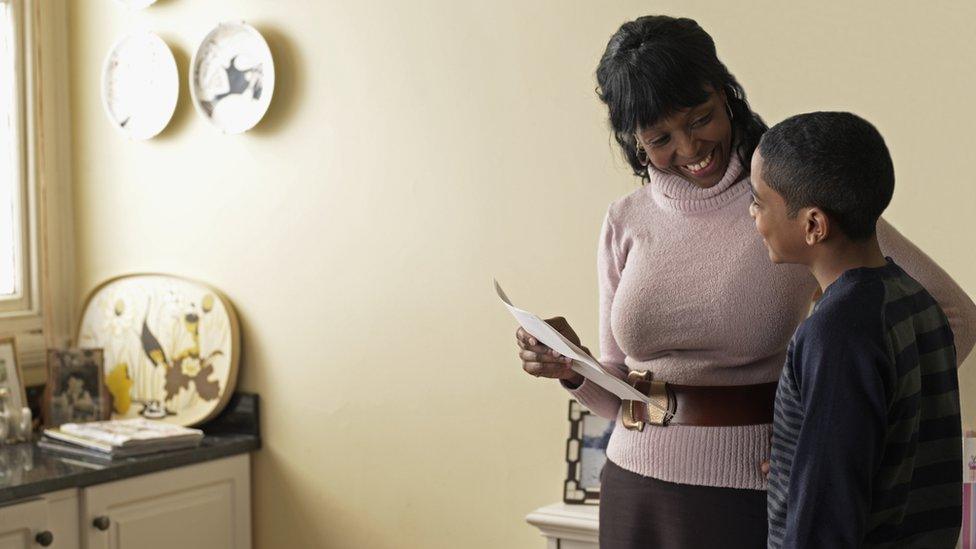Families 'struggle to get first-place secondary school'
- Published

Offer day will not be a happy occasion for all families
Parents in many parts of England are finding it harder to get their child into a secondary school they want, analysis of government data suggests.
Most of the country's towns and counties saw a fall last year in the proportion of pupils getting a place at their first-choice school.
The figures come on National Offer Day - the day families in England find out where they have been allocated a place.
The government said it was creating 600,000 new school places.
Analysis of Department for Education (DfE) data by the Press Association suggests that last year, 80 out of 151 local councils (53%) saw a drop in the proportion of children given their first choice of secondary school compared with the year before.
Meanwhile, 68 authorities (45%) saw a fall in the proportion offered one of their overall preferences in 2016.
Most authorities - 85 in total (57%) - witnessed a drop in the proportion of 11-year-olds offered their first secondary school preference over the past five years.
And about two-thirds, 98 councils (65%), have seen a drop in the proportion offered one of their overall preferences during this time.
Liverpool saw the biggest drop for first choices, down seven percentage points on 2015. While Hammersmith and Fulham in west London had the biggest drop for overall preferences, down 4.2 points.
The biggest fall in first-preference offers between 2011 and 2016 was in Blackpool, down 19.6 percentage points. It also had the largest drop for overall preferences, down eight percentage points.
The application process sees families list a number of choices, in order of preference.
There have been continuing concerns about a squeeze on school places, caused in part by a rise in the birth rate.
Join the conversation - find us on
National Offer Day determines which secondary school a child will attend
A DfE spokesman said: "Last year almost all parents got an offer at one of their top three preferred schools.
"Nearly 600,000 additional pupil places were created between May 2010 and May 2015, and the government is now pushing ahead with the creation of a further 600,000 new school places as part of its wider £23bn investment in the school estate up to 2021."
Pupil population
Richard Watts, chair of the Local Government Association's Children and Young People Board, said: "Creating an extra 300,000 primary places over recent years is a demonstrable record that councils are doing everything they can to rise to the challenge of ensuring no child goes without a place.
"However, as children move on to secondary schools, the majority of which are now academies, councils are working with one hand behind their backs to help as many as possible receive a place at their first-choice school.
"If they are to meet the demand for secondary school places, then existing academy schools should be made to expand where required, or councils should be given back the powers to open new maintained schools."
Russell Hobby, general secretary of school leaders' union NAHT, said: "The massive increase in pupil numbers over the next few years, particularly at secondary age, will only make it harder.
"The government's own figures show that an extra 750,000 school places will be needed in England by 2025, to meet a 10% rise in pupil population.
"There is a desperate need for long-term planning that spans all sectors.
"Schools are facing a £3bn shortfall in funding by 2019, with 98% set to be worse off at a time when costs are rising and pupil numbers are growing."